With “Carol,” the actress is back in the Oscar race and with it the inevitable red carpet question: “Who are you wearing?”
It was shortly after 8 a.m. on Wednesday and Cate Blanchett was 15 minutes late to breakfast.
“Oops,” she said, wafting into the restaurant at the Crosby Street Hotel, giving a smile and a shrug as she explained that when her publicist hadn’t stopped by her room earlier, she assumed the time had been changed and went back to bed.
Oh, well. Surely, one could excuse Ms. Blanchett for being a little sleepy.
After flying in Sunday night from Los Angeles, she hit the ground running with a Monday appearance on “Good Morning America,” promoting her new film, “Carol.” From there, she went on to the film’s press junket, changed into a black Antonio Marras dress with ruffled detailing and darted off to “The Tonight Show Starring Jimmy Fallon.”
Then, she put on an olive green Lanvin gown and hoofed it to the film’s premiere, where she worked through red carpet interviews and posed for shots that would be beamed across the globe.
Thirty minutes later, Ms. Blanchett’s Escalade snaked through Manhattan toward the School of Visual Arts Theater on West 23rd Street for a Q. and A. with the film’s director, Todd Haynes, and her co-star, Rooney Mara, before heading back uptown to an after-party dinner.
The following morning, there was “Live With Kelly and Michael.” In the afternoon, a Q. and A. with the National Board of Review. In the evening, she changed into her black-beaded Chanel and headed to the week’s starriest event: a huge tribute on her behalf at the Museum of Modern Art.
There, colleagues like Ralph Fiennes and Woody Allen feted Ms. Blanchett for her Houdini-like ability to morph into characters ranging from homeless to head of state. Friends testified to her unfailing kindness. Magazine editors waxed poetic about her impeccable sense of style.
So how did she look by Wednesday morning, having ended the previous evening well after midnight? Pretty great, actually.
She was dressed all in black: black Givenchy tuxedo jacket, black asymmetrical Stella McCartney sweater, pleated black trousers and black patent leather Tod’s loafers.
The one dash of color came from a pair of bright pink aviators, which sat on her forehead in front of those famous blue-green eyes, and produced against her monochrome outfit an effect that was almost the ocular equivalent of a Dan Flavin lighting installation.
Ms. Blanchett professed to be a little gobsmacked by all the people who had shown up the previous evening on her behalf.
Martin Scorsese, who directed her in “The Aviator,” was a co-chair of the MoMA tribute, even though it was his birthday and what he really wanted to do was go to dinner with a few friends and family.
“Bless his socks,” Ms. Blanchett said. “What a mensch. What a guy!”
Graydon Carter was another co-host, and just thinking about him brought a smile. “Hasn’t he got wonderful hair?” she said.
She even had a chance to bond again with the artist Cindy Sherman, although that encounter had been a little bit petrifying to her, truth be told.
“Drooling fan! Stalker!” she said, describing herself and the fit of nerves she nearly collapsed into upon realizing the art world’s best known chameleon was amid this dazzling crowd of admirers. “I just thought, ‘Where’s my anorak?’”
So Ms. Blanchett is human. She can still get star-struck all these years later, even after she has won two Oscars, one for “The Aviator” and another for “Blue Jasmine.”
Never mind the interminably long awards-season dinners and mini-wardrobe malfunctions and two-cheek kisses with people harvesting newly named superbugs that only seem to strike at the heart of Oscar season.
Never mind the reporters with their inane questions and rumpled suits that appear to have been bought before the start of the first Bush presidency.
Even now, Ms. Blanchett still manages to evoke, in spite of all that, a sense that she has not seen it all.
This Friday, she hit theaters again in “Carol,” the latest film from Mr. Haynes, in which she plays a housewife falling in love with another woman in the Fifties. It received terrific reviews for itself as well as its leading lady, and the Oscar buzz has been building again.
“It’s been great,” she said of the last year, which also included a six-week run at the Sydney Theater Company, starring in “The Present,” an adaptation of Chekhov’s “Platonov,” and turns in the Disney update of “Cinderella,” as well as “Truth,” on the saga at CBS News.
Ms. Blanchett is aware that being this busy at age 46 is to have a series of problems most actresses only dream of. “But I literally thought I need to bring a sleeping bag to MoMA.!”
Now, she was hungry and in need of a little caffeine.
Thankfully, a waiter approached to take her order: a bagel with smoked salmon, along with some avocado, a little hot water with lemon juice, and some caffeine.
“Would it be possible to get a double espresso with hot milk?” she said.
For the next hour, she dined on all of that in the corner of this half-empty restaurant, talking animatedly about every cultural subject under the sun, from art to theater to movies to fashion to feminism.
She was lovely, she was nice, she was forthcoming.
She also turned out to be the sort of person who peppers conversations with so many erudite cultural references, it was sometimes hard to keep up.
Had a reporter been to the new Whitney?
Yes, he had. Transformed the entire neighborhood. Pass.
Had the reporter seen the well-reviewed new production of “A View From the Bridge” that opened on Broadway last week?
No, he had not. Fail.
There was nothing arrogant or haute about the way she discussed this or any of the artists, writers, designers, directors and playwrights she loves, among them Willem de Kooning, Spike Lee, Raf Simons, John Galliano, Gerhard Richter and Anton Chekhov.
Nor was she anodyne, certainly not as she voiced misgivings about the new Harper Lee novel (“I don’t know that I want to read that book. If she wanted to publish it, would she have published it earlier?”) and lamented the recent departures from Dior by Raf Simons (voluntary) and from Lanvin by Alber Elbaz (definitely not).
“I just knew that it had happened and it was like a little death,” she said, speaking of the firing of Mr. Elbaz, a friend whose dress she wore Monday night. “That’s gone. To what end?”
Still, Ms. Blanchett retains in person a queenly, almost ethereal quality that is unusual in this current era of fame.
She hates selfies. She doesn’t do Twitter. When the food arrived, she did not so much eat it as nibble upon it. Even on the occasion that a four-letter word came from her mouth, Ms. Blanchett seemed constitutionally incapable of being vulgar or bitter.
One could see why directors constantly offer her period dramas. Her modern sense of style is complemented by a tinge of formality that is almost anachronistic.
In “Carol,” Ms. Blanchett plays the title character, a housewife with nails manicured just so, nary a hair on her head ever out of place. Her billowing fur coat gets so much screen time, it could easily have had its own credit.
For Ms. Blanchett, the costumes were a vital tool to finding the character, a form of anthropology, from the outside in.
“The process of developing the costumes, it sounds like ‘O.K., what shoes does my character wear?’” Ms. Blanchett said. “It seems very Stanislavsky. It’s not. It’s more organic than that. It’s like ‘How does this make me move?’ ‘If I move that way, what does it mean?’”
Growing up in Melbourne, Australia, where her mother was a teacher and her father worked in advertising (he died when she was a girl), Ms. Blanchett played dress-up games with her sister, from which they would create fantastical characters with wildly elaborate narratives.
“I would inhabit the clothes she put me in, and then she would name the person that came out,” Ms. Blanchett said. “Our favorite was a guy named Piggy Trucker, this little dude who drove a pig truck to the abattoirs and was really conflicted because it made him stop wanting to eat meat.”
When she moved into doing movies and theater after finishing drama school in 1992, she put that proclivity toward self-transformation to bigger and better use.
In 1999, she hit the carpet at the Kodak for her first nomination — for playing Queen Elizabeth I in “Elizabeth” — wearing a dark John Galliano gown with butterflies on the back.
Five years later, she won her first Oscar for “The Aviator” (playing Katharine Hepburn), decked out in a yellow one-shoulder Valentino with a wine-colored belt and pink floral brooch.
In 2007, she moved back to Sydney from Britain and took over the Sydney Theater Company with her husband, the writer and director Andrew Upton.
There, her status as a fashion icon came in handy as Giorgio Armani provided millions of dollars in donations, and became its lead patron.
In an email, Mr. Armani called Ms. Blanchett “one of the most talented actresses of our time,” a person whose appeal is being simultaneously “fragile and strong, icy and sensual.”
The marriage between the Sydney Theater Company and Mr. Armani also turned out to be a harbinger of a new economic reality in the entertainment business. As movie salaries shrunk and executives turned up their noses at making big, ambitious movies about women, the fashion industry was becoming increasingly dependent on Hollywood celebrities to sell magazines, clothes, jewelry and makeup. And so a small coterie of big-ticket actresses began to earn some of the difference back by taking on edgier, more experimental film and theater work while forging relationships with luxury brands, which compensated their muses in myriad ways for the affiliation.
In 2014, Ms. Blanchett won her second Oscar for “Blue Jasmine” and accepted the award in an Armani Privé gown that was reported to have cost $100,000 to produce, which was mere pennies compared with the value of the jewelry she was decked out in: $18 million worth of Chopard.
There, she gave a speech that was statesmanlike toward her colleagues and pointed toward Hollywood’s studio heads, whom she put on notice for failing to realize that movies about women are not just necessary, but profitable, too. “The world is round, people,” she memorably shouted.
And she was there as a presenter the following year as well, looking resplendent in a silk velvet sheath from John Galliano for Maison Martin Margiela, her neck adorned in a turquoise Tiffany creation that was designed by Francesca Amfitheatrof and inspired knockoffs the world over.
The fact that the Good Witch of Oz never once seemed to land in a supermarket tabloid before or after that only added to her authority and bankability.
“She makes you miss her,” said Riccardo Tisci of Givenchy, who dressed Ms. Blanchett for numerous appearances, including one at the Oscars back in 2011. “You crave on-screen time with her, and then she comes with this crazy major movie and it’s mind-blowing. Then, she’s gone again. She is the antithesis of today’s speed fame obsession.”
Part of this has to do with Ms. Blanchett’s desire to raise her four children, whose ages range from almost a year old to 13, in Sydney, an environment where fame is perhaps a somewhat less powerful commodity than it is in New York or London or Los Angeles. “I don’t want them to be defined by it,” she said. “There’s a circus quality to what we do.”
Still, she frets that she’s damaging them, not doing enough for them, even living nearly 10,000 miles away from all these cameras and all this mayhem.
On her “Tonight Show” appearance, Ms. Blanchett had a blast. But she was still nervous the entire time that she was going to embarrass her oldest son, whom she said “bears the brunt somewhat at an all-boys school when his mother says or does something.”
“When my son heard I was playing a lesbian, he went, ‘ugh,’” she said. “There was no judgment on the creative decision. He could just see what Wednesday at school was going to be like.”
Her time here was now running out. Ms. Blanchett had a baby waiting for her back upstairs, Edith, a little girl whom she and her husband adopted this year. Plus, there was another flight to catch. She was due in New Delhi on Friday, where she had a speaking engagement at Tina Brown’s “Women in The World” summit in association with The New York Times.
But shortly before departing, she talked a little more about her complicated feelings about how women are treated in her industry and answered a question about how she has navigated an entire career without once taking her clothes off in a gratuitous sex scene.
This sentence stuck out beyond the others: “A career is built as much by what you say no to as what you say yes to.”
via New York Times

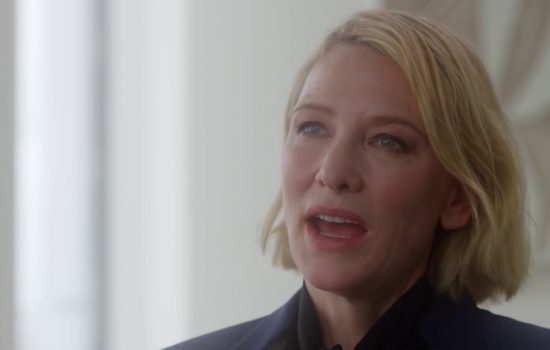
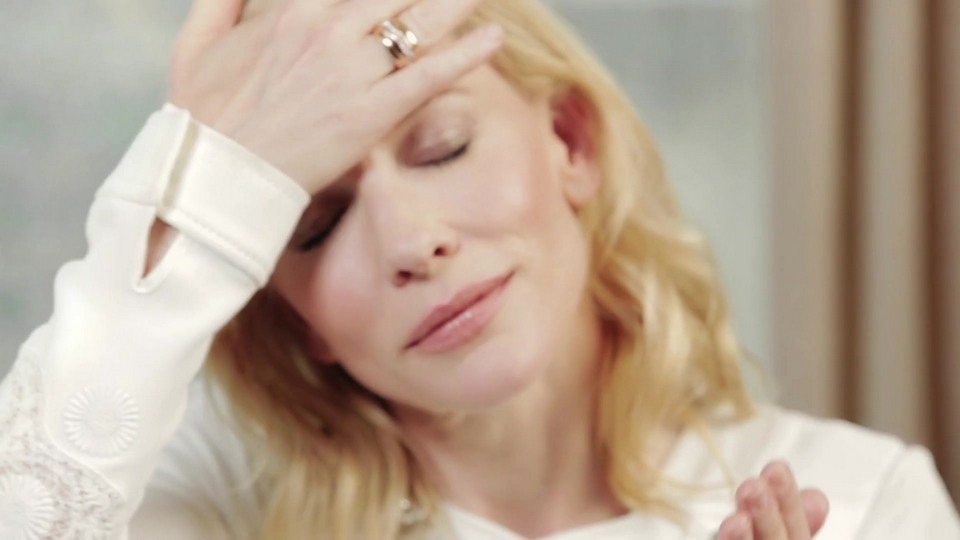
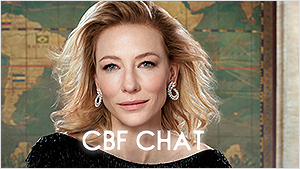
 A Manual for Cleaning Women (202?)
A Manual for Cleaning Women (202?)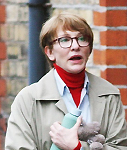 Father Mother Brother Sister (2025)
Father Mother Brother Sister (2025)  Black Bag (2025)
Black Bag (2025)  The Seagull (2025)
The Seagull (2025)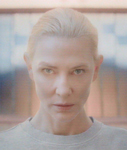 Bozo Over Roses (2025)
Bozo Over Roses (2025)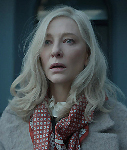 Disclaimer (2024)
Disclaimer (2024) 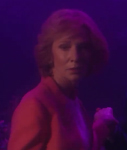 Rumours (2024)
Rumours (2024) 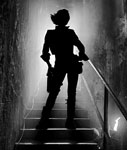 Borderlands (2024)
Borderlands (2024) 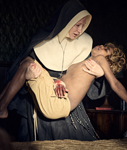 The New Boy (2023)
The New Boy (2023) 











